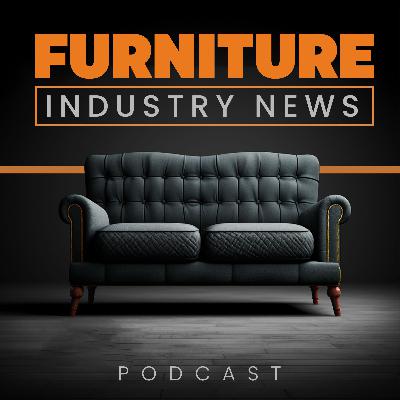Steel Tariffs vs. Housing Boom: The $50 Billion Furniture Showdown
Description
The foremost concern addressed in our discussion pertains to the recent expansion of steel and aluminum tariffs, which have surged to an unprecedented 50%, thereby exerting considerable pressure on the furniture manufacturing sector. This significant policy alteration encompasses over 400 additional product categories, fundamentally altering the landscape of sourcing and pricing strategies for industry stakeholders. As steel serves as a critical component in various furniture products, including motion pieces and bed frames, the financial implications of such tariffs are poised to escalate production costs, inevitably leading to increased wholesale prices across the board. Concurrently, we observe some encouraging indicators within the housing market, with a notable increase in housing starts, suggesting potential growth in furniture demand as new homeowners seek to furnish their properties. It is imperative for industry professionals to remain vigilant and adaptable in the face of these evolving challenges, as the interplay between tariff pressures and housing market dynamics will undoubtedly shape the trajectory of the furniture industry in the forthcoming months.
The discourse presented in this segment elucidates the profound implications of recent tariff expansions on the furniture industry, particularly those instituted by the Trump administration, which have escalated steel and aluminum tariffs to a staggering 50%. This policy shift impacts an extensive array of over 400 product categories, thereby affecting not only raw material costs but also the pricing structures for an array of finished goods. Given that steel is an integral component in various furniture items such as recliners, bed frames, and office furniture, manufacturers are beset with the challenge of navigating inflated production costs that are anticipated to reverberate throughout the supply chain. The implications extend beyond immediate financial considerations, compelling manufacturers to reassess their sourcing strategies and potentially pivot towards domestic suppliers or alternative international partners that might mitigate the financial ramifications of these tariffs.
As we delve deeper into the industry's current landscape, we observe that the tariff-induced cost pressures coincide with emerging positive trends within the housing market. A notable increase in housing starts, approximating 13% compared to the previous year, suggests a potential uptick in consumer demand for furniture, particularly among first-time homeowners who are increasingly inclined to invest in quality furnishings. The interdependence between housing market dynamics and furniture sales is underscored by the fact that new homeowners typically require an array of furnishings to complement their new living spaces. This burgeoning demand, juxtaposed with the challenges presented by tariffs, creates a complex scenario where industry professionals must adeptly navigate these dual forces to sustain profitability and market relevance.
The podcast further explores the adaptive strategies employed by various companies in response to this evolving landscape. Manufacturers are increasingly investing in automation to offset rising material costs, innovating product designs to minimize reliance on steel, and diversifying their supplier bases to mitigate risks associated with dependency on specific countries. This proactive stance is vital, as companies that can swiftly adjust their operational strategies stand a better chance of overcoming the fiscal challenges posed by tariffs while simultaneously capitalizing on the favorable housing market indicators. As we consider the trajectory of the furniture industry in the coming months, it becomes evident that the ability to remain agile and responsive to both policy changes and market shifts will be paramount in determining the success of manufacturers and retailers alike.
Takeaways:
- The recent expansion of steel and aluminum tariffs to 50% has substantial implications for furniture manufacturers, particularly those reliant on these materials for production.
- With over 400 product categories now subject to tariffs, the furniture industry faces increased cost pressures that may fundamentally alter pricing strategies across the sector.
- Positive trends in the housing market, such as a nearly 13% rise in housing starts, could potentially stimulate furniture sales, providing a counterbalance to tariff-induced challenges.
- Many companies are proactively adjusting their supply chain strategies in response to tariff complexities, seeking domestic suppliers or alternative sourcing options to mitigate cost rises.





